The beginning of the jazz music era in America started in the early 1920s after World War I. Americans sought joy from the dark times of the war. Jazz music quickly became popular because of its upbeat tempo and its ability to bring crowds from toe-tapping to learning a new style of dance called the Charleston. Jazz music was able to bring freedom back into people’s lives and even acted somewhat as a bridge between black and white cultures through their love of music.
New Orleans is the home to many famous jazz musicians. Unfortunately, due to racial violence, many musicians relocated to cities such as New York, Kansas City, and Chicago.
The Music
The sound of jazz music is recognizable to all who have been introduced to it. The typical jazz piece has an instrumental introduction, which is then followed by the main melody of the song. After the melody, the musician will typically go into improvisation or solo sections. The improvisation is what makes jazz music stand out from the other genres of music. The solo section allows musicians to show off their skills and encourage reactions from the crowd.
Famous Musicians
Artists that came from the 1920s Jazz Era are still known today for their impact on the music genre. One of the most popular jazz bands known for their New Orleans feel was the King Oliver Creole Jazz Band. The group consisted of King Oliver (also known as John Oliver), Bill Johnson, Johnny Dodds, Baby Dodds, and Louis Armstrong. Despite Armstrong coming into the group late, he immediately became popular for his distinct voice and amazing trumpet playing skills. He is known for classics such as “What a Wonderful World” and “La Vie En Rose.”
Many female musicians also became famous during this time including Bessie Smith and Ella Fitzgerald. Bessie Smith was one of the highest-paid African American musicians of her time. Ella Fitzgerald worked with many jazz singers and sold over 40 million albums and won 13 Grammy Awards during her career. The achievements of both helped pave a new path for females and African Americans.
The Great Depression: End of the Jazz Music Age?
In the 1930s, the Great Depression hit and the Jazz Era abruptly ended. Americans didn’t have the disposable income to enjoy the entertainment. However, the genre still lives on today as an integral part of American music education. Schools across the country include the history and evolution of jazz music into their curriculum. Students who study music are drawn to the genre’s rhythms and relaxed feel. The Jazz Age has become an important way to explain America’s rich cultural history.
Modern-day jazz musicians are inspired by the early instrumentalists. Despite various other genres becoming a large part of the music culture, jazz has withstood the test of time.
See you at the show!
Now that we just had a nice review of the history of jazz, reserve your ticket to the next concert at the River Street Jazz Cafe! We have a wide variety of shows lined up, including not only jazz, but all kinds of music, and would love for you to join us. While you’re here, grab some dinner and drinks with friends. The kitchen is open from 8 pm until midnight!
